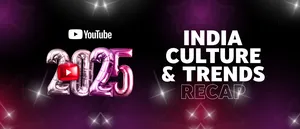Fighting misinformation in India through our products, programs and partnerships
Google’s mission is to organize the world’s information, and make it universally accessible and useful. And when it comes to the internet, we know there’s all kinds of information and not all of it is reliable or trustworthy. At Google, we feel a great responsibility to our users who place their trust in us to deliver them trustworthy, helpful information for their various needs. The scourge of online misinformation runs counter to that mission.
Search trends on misinformation have already recorded an all time high in India in 2023 (and we’re still just in March) which is a clear indication of how much this topic is playing on the minds of Indian users.
To this end, starting today, to help people around the world evaluate information and understand where it’s coming from, our About this result feature will be available internationally, including in nine Indian languages.
Now, whether you’re searching in Hindi, Bengali, Marathi, Tamil, Gujarati, Kannada, Malayalam, Telugu or Punjabi, you’ll see the three dots next to most results on Google Search. Tapping those three dots gives you a way to learn more about where the information you’re seeing is coming from and how our systems determined that it might be useful for your query.
With this additional context, you can make a more informed decision about the sites you may want to visit and what results will be most helpful for you.
Similar features exist across all our products, and represent one part of our fight against misinformation. As we head into International Fact-checking Day this weekend, here are the steps we take across our products, programs and partnerships to combat misinformation online and provide access to content you can trust:
Empowering users with context
As with the latest 'About this result’ feature we are announcing today, we design our products to provide more context throughout people’s journey on our services, so that they are exposed to diverse perspectives before deciding what to explore in depth.
We help users find reliable information on Search and YouTube by bubbling up information from authoritative sources. Find more information about how we do this on our How Search Works and How YouTube Works websites.
On YouTube, you will often see a Top News section near the top of search results, which raises relevant results from authoritative voices including news sources when you proactively search for news-related topics. And, when a major breaking news event happens, to ensure that you can easily access authoritative information, the Breaking News shelf appears directly on your homepage.
Additionally, YouTube features a wide range of information panels on publishers, certain events and topics including health information alongside search results and videos to aid with providing useful context.
Media literacy programs
We partner with media literacy experts to develop trainings to help participants get a better understanding on how to spot disinformation. In India, we support Factshala, a collaborative and multi-stakeholder media literacy network led by 250+ journalists and other experts that run locally tailored workshops and programs in 15+ Indian languages. This year, FactShala is launching an incubator program to help media and community organizations experiment with new and innovative formats to aid media literacy and will run a campaign for youth and first time voters in collaboration with 500 colleges.
In 2022, we also supported Ekta - a consortium of six independent fact-checking groups and Meedan, a global technology non-profit, to run a media literacy and fact-checking training and fellowship for journalism students. YouTube also launched “Hit Pause”, a program to help viewers spot and evaluate misinformation, in India at the end of 2022.
Supporting quality journalism and partnering with the news ecosystem
We dedicate significant resources to supporting quality journalism via the Google News Initiative and collaborate with the whole news ecosystem to create quality reporting and counter misinformation.
Since 2016, through the GNI India Training Network and our Teaching Fellows, we have trained over 60,000 journalists and media students on skills required to detect and debunk online misinformation in India. This includes over 1,200 workshops offered in 15+ languages, and touching more than 1,450 newsrooms and 1,200 universities.
Last year, we also launched the GNI Fact Check Academy to help newsrooms build capacity to verify misleading claims with data, and also to tackle climate related misinformation. And ahead of key state elections, we roll out GNI PollCheck, a digital training series designed to help journalists gather, verify and tell engaging stories to their audiences and experiment with new storytelling formats.
Staying vigilant on emerging threats and responsive to new developments
We look long term at emerging threats, and we conduct and commission research into these threats and how to address them. This is what prompted the work that our partner company, Jigsaw is doing on pre-bunking, an innovative approach to educate people on common tactics that spread misleading information.
Prebunking builds preemptive resilience to misinformation and the concept has already shown promising results in Europe. This work is currently underway in India, and we’re aiming to have insights to share by the end of the year.
Countering malicious actors and protecting our users
We have a range of internal policies that prohibit bad behavior online with policies that cover areas such as misrepresentation, impersonation or health disinformation; and we enforce these policies proactively.
We regularly release reports that detail how we enforce those policies or review content reported to be in violation of local law: our YouTube Community Guidelines Enforcement Transparency report details the actions we take on YouTube each quarter.
Staying ahead of the new and evolving challenges and keeping users safe and secure on our platforms is a top priority. Teams across the company work in a variety of roles to help develop and enforce our policies, monitor our platforms for abuse, and protect users from everything from account hijackings and disinformation campaigns to misleading content and inauthentic activity. And we don’t do this work alone; we work closely with the entire ecosystem to stay ahead of emerging threats.
There is no silver bullet for this scourge, but by bringing different stakeholders with complementary areas of expertise together, we are committed to continuing efforts to tackle this set of issues across our products and services.





